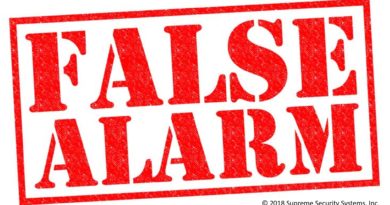Review of the L’Aquila trial
The management of risk by the Italian city is questioned after the deadly earthquake of 2019.
By Natacha Dupertuis and Daniel Uhlmann
November 13th, 2020
Earthquake of April 6th
At 3:32 a.m on April 6th, 2009, a 6.3 magnitude earthquake struck the town of L’Aquila in the central Abruzzo region of Italy. After the main seismic waves had gone, a wake of immense devastation remained. The earthquake killed 309 people and injured 1,600 more, while destroying ten thousand homes and causing ten billion euros of damage. It was the most destructive seismic event in Italy since the 1980s.
Antecedents
Abruzzo has a well-known history of seismic activity. L’Aquila itself sits on an ancient lake, whose soil, made up of pebbles and sand, amplifies any seismic waves which pass through it. The residents have long understood the need to move outside of buildings in the event of early warning signs.
Since January 2009, tremors regularly arose. Based on the radon1 emissions, which are linked to the accumulation of energy by the fault, a scientist named Giampaolo Giuliani predicted and claimed a disastrous event for the 29th March that didn’t occurred. The March 30th a shock happened with a magnitude of 4.1 and people were not anymore reassured and became agitated. Shortly before the earthquake of April 6th, the “Major Hazards Commission” – the local authorities in charge of civil protection – had calmed the public giving the message that a large one was not expected.
1 Radioactive gas produced by the uranium decay and released by rocks.
Scientific community’s incomprehension
In 2011, two years after the deadly earthquake, a judicial inquiry found seven persons of the “Major Hazard Commission” guilty on charges of negligent homicide, imprudence, and lack of respect for laws in the scientific domain. Six scientists and the deputy director of the Department of Civil Protection, Bernardo De Bernardinis, received each a prison sentence of six years. Following the judgement, the scientific community rejected the expectation that they can precisely foresee natural disasters, despite their best efforts and expertise. In 2014, because of the backlash over the initial verdict, the government held a second trial in which all the scientists accused won appeals.

Condemnations
Bernardo de Bernardinis was not successful with his appeal, though his sentence was reduced to four years. Without the accord of the scientists, he had just days before the disaster stated in an interview diffused by the local TV station that the swarm of earlier and smaller earthquakes diminish the chance of a larger event.
The L’Aquila population blamed the government authorities for failing to uphold modern building codes, including anti-seismic norms. It resulted in charges against a local school rector, three entrepreneurs and one technician. The government argued that these regulations would have prevented structural collapses and therefore deaths. The cracked and incomplete walls which are still scattered throughout the city offer a grim reminder of that sad April night.
Sources
2009 L’Aquila earthquake. (2020). In Wikipedia. https://en.wikipedia.org/w/index.phptitle=2009_L%27Aquila_earthquake&oldid=984627021
Alexander, D. E. (2014). Communicating earthquake risk to the public : The trial of the “L’Aquila Seven”. Natural Hazards, 72(2), 1159‑1173. https://doi.org/10.1007/s11069-014-1062-2
Giampaolo Giuliani. (2020). In Wikipedia. https://it.wikipedia.org/wiki/Giampaolo_Giuliani
Stephen, S. H. (2011). At fault ? In Nature (Macmillan Publishers Limited, Vol. 477, pp.264-269).




